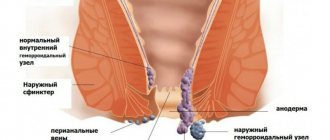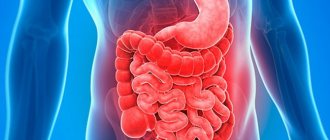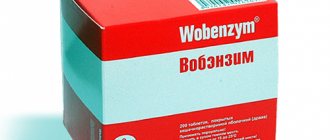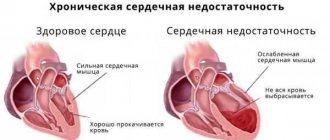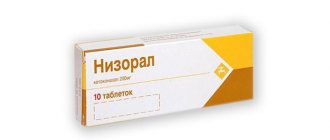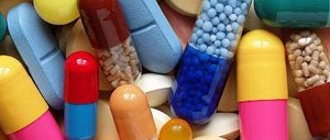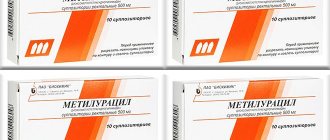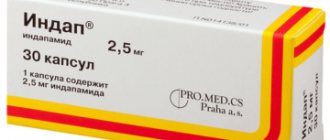Category: Women's health, Drugs
Hexicon is an antiseptic for topical use in gynecology. Effective against gram-negative, gram-positive bacteria and protozoa.
It has virtually no effect on the normal vaginal microflora (lactobacteria). Acid-resistant species of bacteria, viruses, fungi and bacterial spores are resistant to the drug. In the presence of pus and blood, it has slightly reduced activity.
Effective against infections caused by Chlamydia spp., Treponema pallidum, Neisseria gonorrhoeae, Ureaplasma spp., Gardnerella vaginalis, Trichomonas vaginalis, Bacteroides fragilis. Some strains of Proteus spp are insensitive to chlorhexidine bigluconate. and Pseudomonas spp.
Available in several medicinal forms: vaginal suppositories, vaginal tablets and solution for external use.
Release form and composition
Hexicon is available in the form of vaginal tablets, gel for local and external use, solution for external use 0.05% and vaginal suppositories.
Vaginal tablets are oblong and biconvex, white, with a yellowish tint and marbling of the surface allowed. Available in 10 pieces in blister packs.
The active ingredient in all dosage forms is chlorhexidine bigluconate, in tablets and in solution - in the form of a 20% solution. The excipients in the tablets are the following:
- Microcrystalline cellulose (for medical purposes);
- Stearic acid;
- Pregelatinized corn starch;
- Lactose monohydrate;
- Low molecular weight povidone.
Gel for external and local use Hexicon contains the following components as excipients:
- Cremophor – RH 40 (polyoxyl 40 hydrogenated castor oil);
- Poloxamer 407;
- Purified water.
The solution for external use is transparent (or slightly opalescent) and colorless. Available in 10, 50, 70, 100, 150, 200, 250 and 500 ml in polyethylene bottles with a polymer nozzle. One cardboard pack contains 1 bottle. Purified water acts as an auxiliary substance.
Vaginal suppositories Hexicon are torpedo-shaped, white, with a yellowish tint and slight marbling on the surface. Available in 1 and 5 pieces in blister packs. One cardboard box contains 1 or 2 packages. The auxiliary components in the suppositories are polyethylene oxide 1500 and polyethylene oxide 400.
special instructions
Directions:
- Before taking the first dose of the drug, it is important to make sure that the suppositories do not cause individual intolerance.
- It is advisable to delay the start of treatment until after your period.
- The use of soap should be excluded from hygiene during treatment with Hexicon.
- During the period of use of Hexicon, you should not use hygiene products based on soap and sodium lauryl sulfate, as well as Carboxymethylcellulose (E466) and steroid substances (saponins).
- It is unacceptable for Hexicon to come into contact with wounds, especially with head injuries, ear injuries and spinal cord injuries.
- If the drug gets on mucous membranes for which it is not intended, parts of the suppositories should be washed off with water.
- It should be borne in mind that an attempt to bleach fabrics that were in direct contact with chlorheskidine (Hexicon) with products of hypochlorite origin will cause the areas of contact to turn brown.
- With increasing temperature, the effectiveness of Hexicon increases.
Indications for use
According to the instructions, Hexicon in the form of tablets, suppositories and solution is used to prevent the following sexually transmitted infections:
- Syphilis;
- Chlamydia;
- Gonorrhea;
- Ureaplasmosis;
- Genital herpes;
- Trichomoniasis.
According to the instructions, Hexicon in the form of tablets and suppositories is also used to prevent infectious and inflammatory complications in gynecology and obstetrics:
- Before childbirth or abortion;
- Before intrauterine examinations;
- Before and after diathermocoagulation of the cervix;
- Before and after installation of an intrauterine device;
- Before operations for various gynecological diseases.
The indication for the use of Hexicon in tablet form is bacterial vaginosis and mixed, nonspecific and trichomonas colpitis. In the form of suppositories, the drug is indicated for exocervicitis, endocervicitis and mixed, nonspecific and trichomonas vaginitis.
The drug in gel form is used to treat the following skin infections:
- Pyoderma;
- Paronychia;
- Diaper rash;
- Impetigo;
- Felon.
In gynecology, Hexicon gel and solution are used for vulvitis, in urology - for balanoposthitis and balanitis (gel), urethritis and urethroprostatitis (solution), in dentistry - for the treatment of stomatitis, alveolitis, gingivitis, periodontitis and aphtha.
Hexicon solution is also used to disinfect infected burn surfaces and purulent wounds.
Side effects
Symptoms indicating a tendency to side effects from taking Hexicon suppositories are individual in nature.
They are usually expressed like this:
- presence of itching;
- allergic reactions on the skin;
- feeling of stickiness in the palms;
- increased sensitivity to light, namely to ultraviolet rays (redness of the skin when exposed to sunlight).
Allergies can be expressed in the urge to urinate, itching, burning, swelling of the mucous membrane, bleeding of the labia and vagina.
Suppositories are used exclusively by inserting a suppository into the vagina, that is, they are not intended to treat infections on other mucous membranes. However, the components included in Hexicon (chlor-hexidine bi-gluconate) can be used to treat gingivitis.
In this case, side effects may be unexpected, such as staining of teeth. These symptoms do not apply to Hexicon suppositories, since suppositories are not intended for the treatment of dental diseases.
Directions for use and dosage
Hexicon tablets and suppositories are intended for intravaginal use. Before use, the tablet should be moistened with water. To prevent sexually transmitted infections, 1 tablet or suppository should be administered no later than 2 hours after sexual intercourse; for treatment, 1 tablet or suppository should be administered 1-2 times a day. The course ranges from 1 week to 10 days.
When treating gynecological and urological diseases, Hexicon gel is applied twice a day to the affected areas for 7-10 days. For skin infections, the drug is applied to the affected surfaces 2-3 times a day. In dentistry, the product is used in the form of applications with an exposure of 1-3 minutes 2-3 times a day.
Before using the drug in the form of a solution for the prevention of sexually transmitted infections, it should be administered using a nozzle into the woman’s urethra in a dose of 1-2 ml and into the vagina in a dose of 5-10 ml. For men, the drug is administered in a dose of 2-3 ml into the urethra. The drug should be delayed for 2-3 minutes. Hexicon solution is also used to treat the genitals, pubic area and inner thighs. After the procedure, you should not urinate for 2 hours.
In the treatment of urethroprostatitis and urethritis, liquid is injected into the urethra by injecting in a dose of 2-3 ml 1-2 times a day. The procedures are carried out every other day. The course of therapy is 10 days.
Can I use it during menstruation?
Hexicon suppositories (the instructions for use allow for the possibility of using the drug during menstruation, if their onset occurred during the course of treatment) create an acidic environment. Since blood is alkaline, it can reduce the effectiveness of the suppository by neutralizing the environment it creates.
Doctors recommend not to interrupt taking the drug due to menstruation, however, for greater effectiveness, it is better to start treatment after the end of menstruation.
Drug interactions
The effect of Hexicon is neutralized by ordinary soap solution. This should be taken into account and not use soap and compositions based on it for douching. Hexicon is also not used simultaneously with iodine-based medications. It is permissible to use suppositories together with benzalkonium (chloride), cetrimonium (bromide).
Hexicon candles. The instructions for use state that you cannot use soap and formulations based on it for douching at the same time.
There are also some substances that increase the effectiveness of the action of chlorhexidine on the mucous membrane, for example, ethanol. Therefore, taking ethanol-based drugs during treatment with suppositories will be useful.
What drugs can replace Hexicon?
For women carrying a child, many medicines are offered that have the same properties as Hexicon. They differ in composition, so if you are individually intolerant to the drug, they can become its replacement. Expectant mothers can get rid of infectious diseases with the help of Terzhinanom, Pimafucin or other similar medications that can be used during pregnancy. If a woman begins to show signs of thrush during treatment for any genital infection, then Hexicon should also be replaced with analogues, since it can cause an exacerbation of the disease.
When resorting to treatment of diseases of the genital organs, the expectant mother should first consult a doctor, since some medications cannot be used during pregnancy. The doctor will be able to accurately diagnose and determine the most appropriate and safe medication for a woman carrying a child. Every expectant mother should be attentive to her health status. This will allow her to joyfully say: “I’m pregnant,” and not be puzzled by the fact that the fetus can be harmed by her illness. Therefore, when the first symptoms of genital diseases appear, she should immediately consult a doctor.
Discharge after treatment
Bloody discharge after Hexicon during pregnancy is evidence that this drug is contraindicated for the expectant mother. Sometimes they can indicate the development of bacterial vaginosis or placental abruption, which is extremely dangerous for a pregnant woman and can lead to the threat of miscarriage. They may also appear due to non-compliance with the dosage or prolonged use. When they appear, you should definitely see a doctor. Women who were infected with sexually transmitted diseases at the time of treatment often experience pinkish or brown discharge after using the drug. This phenomenon is considered normal. Pathogenic organisms under the influence of the drug come out of the vagina along with secretions. In any case, you must notify your doctor about the appearance of any discharge and, on his recommendation, stop or continue using Hexicon suppositories.
5
Analogs
What are Hexicon candles made from? Vaginal suppositories are used to combat sexually transmitted infections. Suppositories have inexpensive structural analogues that have an identical chemical composition, active substance and spectrum of action. Analogues of Hexicon include Citeal, Depantol, Hibiscrub, Katedzhel S, Plivasept, Chlorhexidine.
Action of the medicine
Chlorhexidine, the basis of the drug, has been known for more than 60 years. This antiseptic in the form of bigluconate is a biguanide derivative, therefore its mechanism of action is similar. The substance interacts with phosphate groups located on the surface of cells, which causes a shift in the osmotic balance. The integrity of the microbial cell membrane is compromised and it dies. Thus, the main effect of Hexicon is bactericidal, it does not apply to viruses and fungi.
Hexicon does not affect bacterial spores and acid-resistant strains of microbes that do not respond to changes in acid-base balance.
The drug helps against most causative agents of gynecological infectious diseases, and works against some bacteria - causative agents of sexually transmitted diseases.
Chlorhexidine copes with the following microbes:
- treponema pallidum;
- chlamydia;
- Neisseria;
- ureaplasma;
- gardnerella;
- bacteroid;
- Trichomonas vaginalis.
The drug has no effect on Mycobacterium tuberculosis, Pseudomonas and Proteus, but has a negative effect on the development of herpes viruses type 1-2. It retains reduced activity in the presence of blood and pus in the genitourinary system. When inserted into the vaginal tract, suppositories and tablets create a thin protective film, provide a local therapeutic effect, and are almost not absorbed systemically. The medicine is safe for the vaginal microflora because it does not destroy the lactobacilli inhabiting it.

